
Diego Velázquez: biography
Diego Velázquez is an individualist painter of the Spanish Baroque era, a court painter of Philip IV, who recreated historical scenes, painted portraits of monarchs, famous people and commoners. His work became a model for Impressionists and realism artists and was recreated in the works of Salvador Dali and Pablo Picasso. The paintings of Velázquez are stored in the collections of major museums in the world, in 1999 and 2014, documentaries dedicated to the mastery of the genius saw the light of day.
Childhood and youth
Diego Rodríguez de Silva y Velázquez was born to João Rodrigues de Silva and Jerónima Velázquez, who baptized their son in the local Church of St. Peter on June 6, 1599, a few days or weeks after his birth.

As a child, the boy received proper training in languages and philosophy, while being fond of fine arts. Diego began to study drawing in the studio of Francisco de Herrera, a progressive artist who ignored the influence of the Italian school.
When Velázquez was 12 years old, he started working under the guidance of Francisco Pacheco. The teacher believed in the talent of the aspiring master and brought him to the necessary people. At the age of 17, Diego became an independent artist, joined the Corporation of painters of Seville, dreaming of a career at the court of the king.
Painting
At the beginning of his creative biography, Velázquez became famous for depicting everyday scenes from the life of commoners. Old Woman Frying Eggs, Two Young Men Eating at a Humble Table, The Lunch were painted in the genre of bodegones, which translated from Spanish as "a tavern."
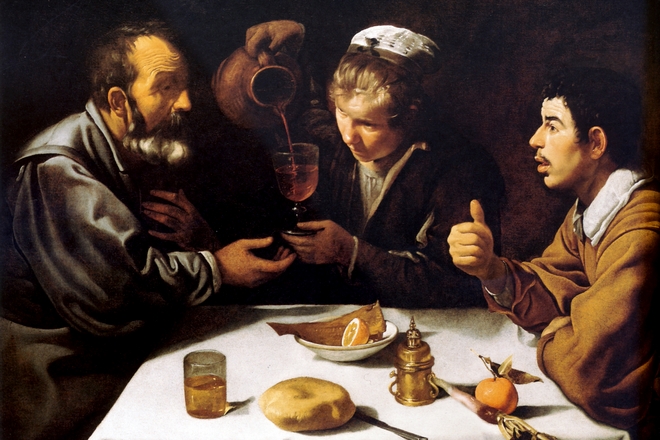
In the spring of 1622, Diego went to Madrid with a letter of recommendation to Archbishop Juan Rodriguez de Fonseca, who introduced the young artist to Gaspar de Guzmán, Count-Duke of Olivares. The court nobleman ordered Velázquez to paint his portrait. After he had finished the work, Diego was granted an audience with the king and received the praise of the monarch.
In 1623 Diego was ordered to settle in Madrid, promising that other artists would never paint Philip IV. Velázquez created the first portrait of the Spanish king in 1623. After that, he began a court career, receiving 20 ducats a month, medical care, housing and payment for the paintings he would create.
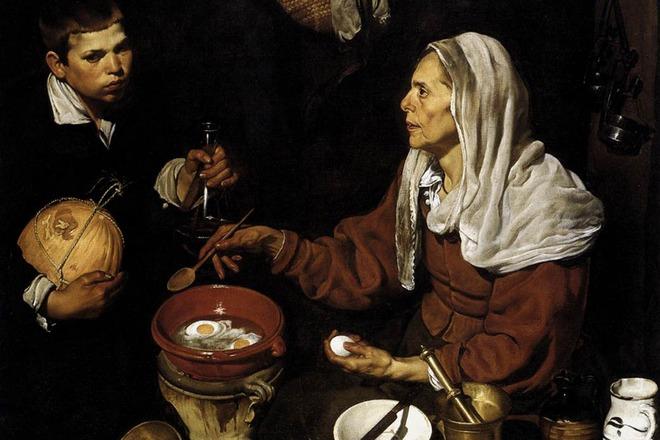
In 1627, Velázquez won a competition of Spanish painters, arranged by the king, the theme of which was the expulsion of the Moors. The painting died in the fire of 1734 in the Alcazar of Madrid, according to contemporaries, it depicted Philip III, showing a baton to the side of the crowd of men and women, driven by soldiers. As a reward, Diego received the position of Chamberlain, and a year later became the court artist of his Majesty the King of Spain, replacing the deceased James Moran.
In 1629, with the permission of the monarch, Velázquez went to Italy for a year and a half. Although researchers recognized his first visit to Michelangelo's homeland as an essential milestone in the development of individual style, there is little information about who the artist met, what he saw and what innovations he hoped to bring to his painting.
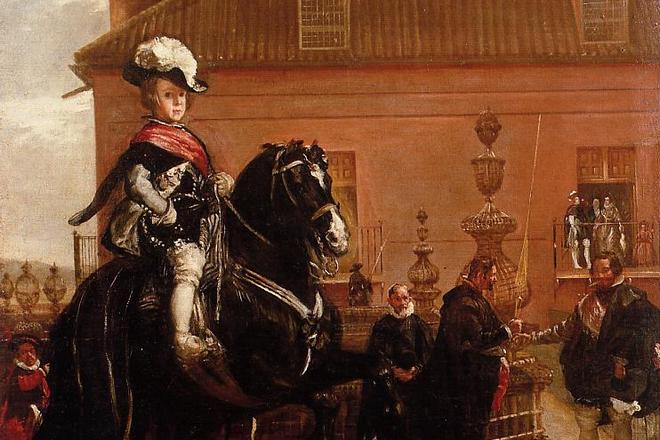
Returning to Spain, Velázquez began to create portraits of the Royal family and the entourage of Philip IV. The most famous are the paintings Riding lesson of Prince Baltasar Carlos, where the young heir is depicted in the dress of a field marshal on a prancing horse, images of Queen Elizabeth of Bourbon and the poet Francisco Gómez de Quevedo, as well as several portraits of the Count-Duke of Olivares, in which the artist expressed gratitude to his benefactor.
Performing the duties of a court painter, Velázquez regularly and carefully watched Philip IV; he painted more than 40 of his portraits. Often following the monarch on his travels, he was present at the conquest of Lleida. It was then that the artist painted an equestrian portrait, in which the king appeared in the image of a great General, who led the troops, which in fact never happened.

Velázquez also painted several buffoons and dwarfs at Philip's court, which he treated with respect and sympathy. In the artwork, The Dwarf Don Diego de Acedo 'El Primo', the intelligent face and a substantial tome with an ink bottle and a pen next to the character show that the royal servant was wiser and more educated than many court nobles. Other works of the artist on this topic are Portrait of Pablo de Valladolid, Portrait of Francisco Lezcano, Don Juan de Calabasas.
The greatest of Velázquez' religious paintings, Christ Crucified, depicting the Savior immediately after death, dates back to the 1630s. In the late 1640s, Philip entrusted the court painter with the Foundation of the Academy of Arts in Madrid. Rich in pictures, Spain needed sculpture, and Velázquez was instructed to visit Italy to make acquisitions.
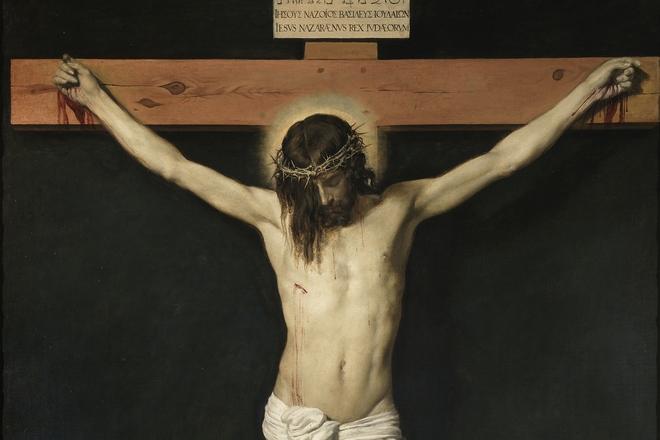
In 1649, the artist visited Genoa, Milan, and Venice to buy works by Titian, Tintoretto, and Veronese. Arriving at the Vatican, Velázquez received an order for a portrait of Pope Innocent X and did it in a new bold and sharp style, called manera abreviada (a technique of rapid writing).
The picture showed such ruthlessness in the expression of the Pope that some feared the wrath of the head of the Roman Catholic Church. Contrary to expectations, Innocent liked the work; he hung it in the room in front of his office.
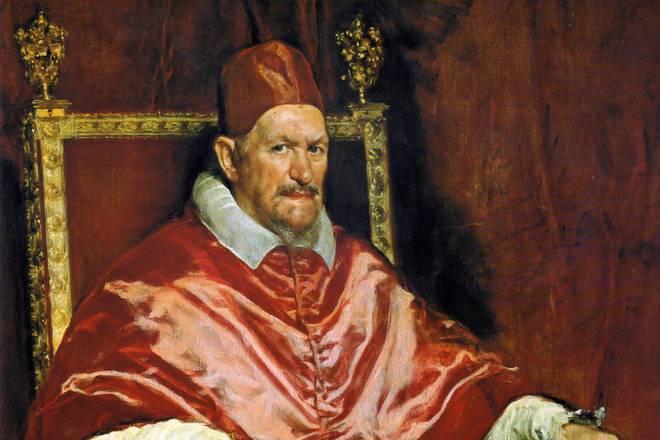
In 1651, at the request of Philip, Velázquez returned to Spain, organized and cataloged paintings and sculptures brought from Italy, and began to create his most famous works. Drawing inspiration from the works of Italian painters, Velázquez finished the painting Rokeby Venus, depicting the Roman Goddess of love, beauty, and fertility, calmly lying on the bed, with her back to the viewer. She looks in the mirror held by Cupid.
Folds of sheets repeat the physical form of the goddess and emphasize the full curves of her body. The artist used shades of red, white, and gray in the figure of Venus in the foreground of the composition. These colors contrast with the dark silks on which the goddess lies, and with the brown color of the wall behind her reflection.

An interesting fact is that vandals attacked Rokeby Venus in 1914. Suffragette Mary Richardson entered the National Gallery of London and attacked Velázquez' canvas with a meat cleaver, leaving cuts between the shoulders of the Central figure.
In the year 1655, according to art historians, Velázquez created another of his famous paintings Las Hilanderas ("The Spinners") which, according to some researchers, depicts women workers in a tapestry workshop. According to another version, considered the correct interpretation of the work, the artist drew the plot from Ovid's fable about the mortal Arachne, who dared to challenge the goddess Athena in a weaving contest. In this work, Velázquez used a multi-layered composition of the bodegones genre characteristic of his early works.
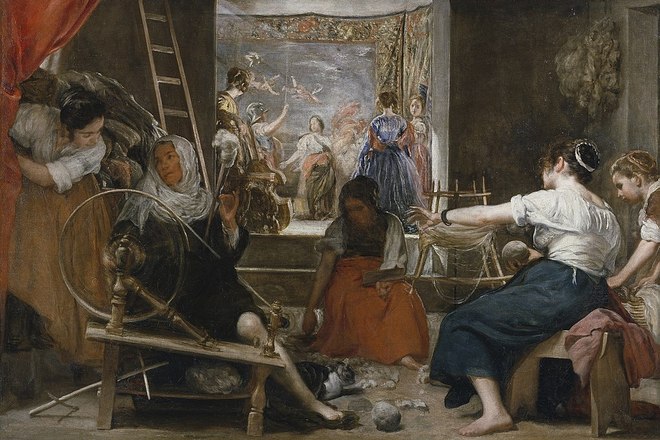
The Spinners were created by order of the court hunter don Pedro de Arce and entered the Royal Collection. The canvas survived the fire of 1734 but received significant damage at the edges. During the restoration, the missing elements were added and preserved to the present day. However, in the Prado Museum, only surviving part of the picture is exhibited, and the recovered items not belonging to Velázquez, are hidden behind the frame.
The last portraits of the Royal youths of Velázquez, painted shortly before his death, are among the best paintings of the Spanish master. In Portrait of the Infanta Margarita, the author's individual style reached its climax: bright patches of color on broad picturesque surfaces produce an almost impressionistic effect of three-dimensional space.
Personal life
On April 23, 1618, Diego Velázquez married the daughter of his teacher, Juana Pacheco. The artist and his wife had two children. The youngest daughter, Ignacy, died in infancy, and the elder, Francisca, arranged her personal life by marrying the future court painter Juan Bautista Martínez del Mazo, who continued the traditions of his great father-in-law.
Death
In June 1660, Velázquez had the honor to decorate the Spanish pavilion and the entire picturesque exhibition of the wedding ceremony of Princess Maria Theresa with King Louis XIV of France, which was held on the island of Pheasants, on the Bidasoa river.

This event had a harmful influence on the health of the court painter. After returning to Madrid, he had a fever. Sensing the end approaching, Velázquez signed his will, appointing his wife and his friend, the keeper of the Royal records, as his heirs and sole executors of the last will.
On August 6, 1660, the artist died. The cause of death was a fever. Eight days after Velázquez was buried, his wife Juana died. Their graves were in the Church of San Juan Bautista, which was destroyed by the French in 1811. The current place of the artist's remains is unknown.
Paintings
- 1618-1619 - Lunch
- 1619 - The Adoration of the Magi
- 1628 - The Triumph of Bacchus
- 1631 - Prince Balthasar Charles with a Dwarf
- 1632 - Christ Crucified
- 1638 - Portrait of Count-Duke of Olivares
- 1637-1639 - Don Juan de Calabasas
- 1647-1651 - Rokeby Venus
- 1650 - Portrait of Pope Innocent X
- 1653-1655 - Portrait of Philip IV
- 1656 - Las Meninas
- 1657 - Las Hilanderas ("The Spinners")




